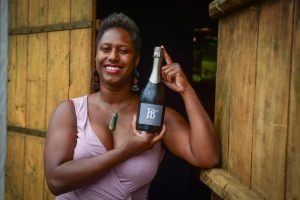There are few quicker ways to start an argument in the world of wine than say the ‘t’-word: terroir.
For some producers, merchants, consumers and sommeliers, the mere mention of terroir elicits an eye roll. This contingent views it as no more than a buzzword, a sales technique. There are many factors that go into wine, the argument goes, but an amorphous mix of place, person and providence, as ‘terroir’ is usually defined, deserves no more emphasis than the others.
Others view terroir as an intuitive and effective way to understand what makes a place and its wine special. It is the ‘culture’ aspect of both viticulture and viniculture, and an essential part of what makes winegrowing unlike any other discipline. The term may be frequently misunderstood and outright misused, but it does not change the importance of its underlying message.
As we have all had more than ample opportunity to get to know our own ‘places’ in the past 18 months, it seems like a good moment to explore how the wine professionals at ASI approach the topic of terroir.
We spoke with five top figures in ASI: three floor sommeliers, whose interviews are provided below, and then two separate full-length interviews: one with Jean-Pierre Durand of Advini, and one with Brian McClintic, a noted sommelier and star of the SOMM documentary film trilogy. Each offered fascinating insights into a subject whose topicality never fades.
**

CURLY HASLAM-COATES
Curly Haslam-Coates is, by her own proclamation, a “sparkling goddess, wine educator & writer, Tasmanian food and drink ambassador and believer in the importance of kindness and using your powers for good.” She has worked in the food and drink industry for 25 years, first in the UK and later in Tasmania, which she first visited using the winnings from the Vintners Bursary after her WSET Level 3 Wine & Spirits qualification. Her work focuses on education and inclusion via The Whole Bunch Collective and Sommeliers Australia’s Diversity & Inclusion group.

MATTHEW LANDRY
Matthew Landry, FWS, IWS, is a certified sommelier through the Court of Master Sommeliers. Based in Vancouver, Canada, Matthew recently won the Best Sommelier of British Columbia competition. His current title is that of French Programs Director for the Wine Scholar Guild. Outside of his work with the Guild, Matthew is an international wine judge, importer and occasional wine designer. His current release, a skin contact Albarino called Infinite Zest, is available throughout British Columbia.

RASTISLAV Šuták
Rastislav Šuták hails from Kysuce, a region in the north of Slovakia known more for skiing and hunting than winemaking. Šuták looks back on over 20 years in hospitality and gastronomy, in both the Czech Republic and Slovakia. In 2005 he joined the Association Sommeliers of Slovakia and began competing at sommelier competitions. In 2008 he completed the ASSR educational programme at the Professional level and in 2017 became a member of ASI Sommelier Diplôme. He serves as vice president of the Association of Slovak Sommeliers as well as a lecturer on the sommelier education platform and occasional wine contributor for magazines and blogs.
Terroir is an exceptionally difficult concept to explain. But if you had to define it for someone unfamiliar with the term, what would you say?
CHC: For me it is the sense of a place. Nothing in wine or life is singular and to me terroir brings all of the factors together under an umbrella term. It is the sunlight, the soil, the trees close by the amount of water and every other minute detail that makes that particular spot the way it is and in turn influences the grapes grown and the wine that you can make from it.
ML: That depends on the context. For an interested student, I’d describe terroir as a wine’s origin story, like a movie that’s based on a true story but which also takes liberties with the facts. It’s a useful umbrella term – a heuristic technique — to summarize all of the physical factors that have contributed to what you find in your glass. There are so many caveats, however, it requires time and a curious mind. Now, if I were explaining it to my skeptical suburban friends, I’d say terroir is something Europeans use to sell expensive wine.
RŠ: Place in many words: origin, specific varieties, uniqueness of unique micro-climatic conditions, such as sites and elevation of vineyards. It’s also a place where people care about the wines. It’s a place with sensible winemaking and finally a place of local cuisine to help understand how it all comes together on the table.
Most of you come from countries traditionally considered “New World,” i.e. where the wines are labeled by variety instead of region. How do you explain the concept of terroir to guests that are accustomed to identifying a wine by the typicity of a variety?
ML: I use the idea of Nature vs Nurture, a quick, crude analogy I can make while serving multiple tables. While a particular grape variety may have immutable characteristics, where it is coming from is more often a better indicator of what the customer will find in the glass. If a customer tells me they like a light pinot noir, I’m not going to recommend the Russian River Valley. If someone asks for a Malbec because they like powerful, smooth wines, I’m not going to recommend Cahors. This is where the somewhat vague idea of terroir can start to make sense for the uninitiated.
CHC: I am a wine tour guide in the Tamar Valley a couple of days a week and I ask guests to notice the change in temperature from one venue to another. The difference from the entrance to the cellar door and the deck overlooking the vineyard/river/whatever is there. It’s a simple concept that is easily understandable. I also ask them to think about their own gardens or their house and where the plants grow best, the sunniest room, the puddles after it rains.
RŠ: I lean on the statement of Madame Lalou Bize-Leroy, who said: “The variety is only a key that opens the terroir.” The variety is very important to the definition of terroir. I recommend that people don´t be afraid of wines that express instead of impress.
Which district or region in your country has an unmistakable terroir for you and why?
RŠ: In Slovakia we have many fine places with characterful wines, but the most rewarding to me is Tokaj. There is no other region in the world that spans borders with such a specific character. Our part of the Tokaj region is much smaller than in Hungary. Our wines come from seven villages and a bunch of producers. Thanks to its northern location, the Slovakian Tokaj shows fine freshness and strong oxidative style. Despite small differences, Tokaj from both countries offers timeless wines with unmistakable terroir experience.
CHC: There are many options but I would choose the Pipers River area of Tasmania, or as I like to call it the sparkling corner. Even in the height of summer, leaving Launceston and driving 55 minutes north means remembering to put a cardigan in the car because the proximity to the Bass Strait means the vineyards up there are often cooler in the mornings for longer and there is a noticeable temperature difference compared to Launceston.
ML: Far from the global stereotype of ice wine and hybrid grapes, the large Okanagan Valley boasts a landscape not too dissimilar from that of the Columbia Valley, especially in the lower Okanagan near the US border. In the south, the high desert conditions suit Bordeaux and Rhone varieties, with Syrah being the leading contender, qualitatively speaking. As one heads north, the temperature is greatly moderated by two large lakes – Okanagan Lake and Skaha Lake. Approaching the city of Kelowna and areas northward, the average temperature drops and Pinot Noir, Riesling and Chardonnay begin to dominate.
Beyond terroir, the Okanagan is one of the most breathtaking wine regions in the world and is ideally suited for tourism. Please come!
Climate change is forcing us all to reconsider traditional beliefs about a “sense of place.” What do you think the future looks like?
CHC: I want it to look positive. I want us to have learned from the heartbreaking frosts in France and the terrifying and devastating fires in Australia and California and to realise that we can’t keep going in the same direction that we have been. Pigeons learn quicker, we are supposed to be clever people with a huge capacity to learn. We can make a change and think about generations to come and not just the next financial year.
ML: I imagine the future will be almost unrecognizable, as once prominent regions struggle to adapt to rising temperatures. European vineyards once prized for their south facing aspects will suddenly struggle to restrain overripening. Traditional grape varieties will be replaced by those that can survive near constant drought, altering long standing appellation rules. On the plus side, large-scale commercial farming of vines will become untenable in certain areas as water rights dry up. Hopefully we will see a return to dry farming, regenerative agriculture and an understanding that monoculture will only exacerbate the threats of global warming.
RŠ: Growing conditions have changed during the last two or three decades. But when we start to listen to nature and go back to the roots, the term “sense of place” in the future becomes real, not just a phrase.

